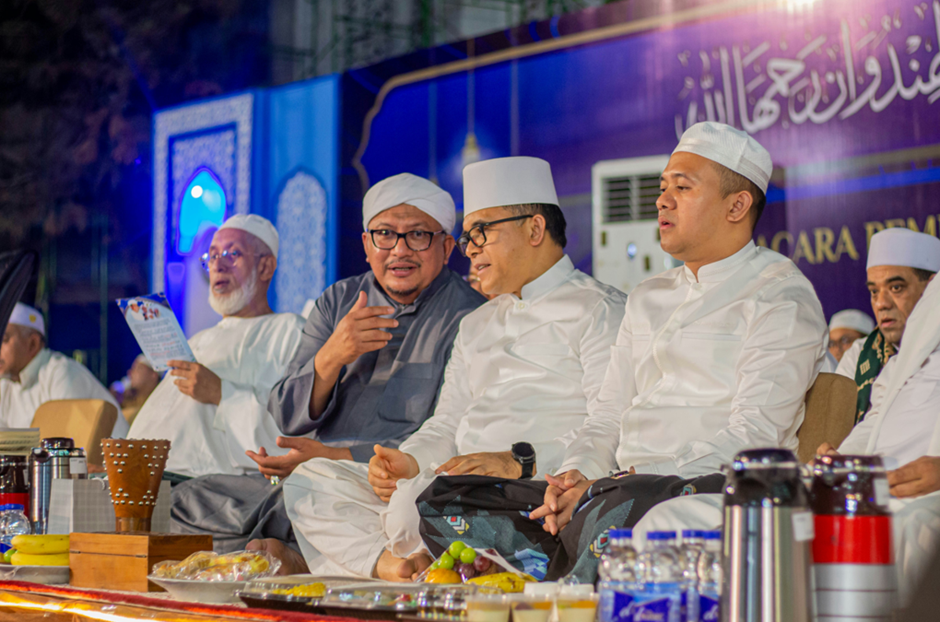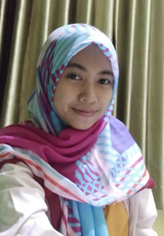
Introduction
Though mostly ignored by national media, kiai (religious clerics) have played a central role in opposing the provincial government’s plan to open phosphate mines in Sumenep, Madura, East Java. These kiai have rallied under the banner of Forum Sumenep Hijau (Green Sumenep Forum) since 2021 to galvanise strength and numbers in order to put a halt to this plan.
While such activism is overtly rooted in the concern over environmental degradation and sustainability, it is also emblematic of a deep-seated adherence to Madura’s tradition. Furthermore, it is a blatant display of the clerics’ exercise of power, as well as a demonstration of the kiai’s exercise of the Islam kaffah tenet, which signifies a complete embrace of all Islamic teachings.
This article aims to explore these themes while scrutinising the controversial mining activities in Madura.
Community Leaders
We need to begin by understanding kiai’s place and role in Madura’s social and religious hierarchy. Revered religious leaders such as kiai are at the pinnacle of the social order in the countryside, and they serve as a guide to Madurese living their daily lives.
Kiai and their associated pesantren have long served as providers of education, knowledge and information to the surrounding communities. Over time, they gradually became acknowledged as problem solvers for social issues, thus conferring on the kiai the status of charismatic community leaders. Because of this, kiai and their respective communities form a solid bond, on which an effective social power structure is built.
It also means that the people’s concerns are kiai’s—the former are the latter’s charge, and it is the kiai’s duty to look after them. As community leaders, kiai are expected to push for the common good of the people, even if it means opposing plans for development.
Given that the majority of Sumenep’s population is Muslim and associated with Nahdlatul Ulama, the kiai’s position is thus solid, owing to the great support they receive from the people. The close alignment between the paradigms of Nahdlatul Ulama and Sumenep’s local tradition further cements the power structure that binds the people to the kiai, many – if not all – of whom are Nahdliyin.
Opposition
The dispute began with the district government’s amendment to Regional Regulation 12 of the 2013 Regional Spatial Plan (RTRW) that gives excessive benefits to investors aiming to develop local mining businesses, owing to vague and broad wordings that open up multiple interpretations. For instance, the lack of details on areas designated for mining activities could enable phosphate mining companies to conduct their activities unrestrained, thereby threatening the local ecosystem and potentially causing a water crisis.
Since its passing in 2023, the regulation has drawn attention and rejection from the grassroots. Hearings at the local parliament, community advocacy and public discussions were held to ameliorate the situation.
Spearheading the opposition against this plan are the kiai who were moved by the potential environmental fallout and subsequently formed the Green Sumenep Forum. Furthermore, they were also troubled by what appears to be a violation of Madura’s tana sangkol (ancestral land) principle, in which landowners sell their lands at a low price to mining companies.
As community leaders, the kiai found themselves compelled to be more vocal in voicing out the aspirations of the community and also to educate them on this issue.
They shared four observations and calls to action: 1) mining activities in Sumenep’s karst rock landscape areas must be prohibited; 2) the community lacks the necessary resources to repair the subsequent environmental damage caused by mining activities; 3) the Sumenep population must obligate their children and grandchildren to preserve the environment in the present and future, and; 4) the Sumenep population is encouraged to hold istighatsah (mass prayer) and lailatul ijtima’ (night gathering) as a way to consolidate communal endeavour against destructive activities and disasters.
The kiai’s opposition is based on the intertwined factors of the government and mining companies’ capitalist agenda as well as the potential environmental problems. Interestingly, this opposition was mounted on neither a financial nor a sustainability platform but on religious and local traditions.
In conveying these four points, the kiai employed the narrative of amar ma’ruf nahi munkar (promoting good and forbidding evil) that is weaved together with the tana sangkol (ancestral land) principle. This is a tactic that found great reverberation among Sumenep’s local population, as indicated by their active participation in protests.
But why Islam? We must connect this with the kiai’s embrace of the Islam kaffah tenet, which sees Islam as a foundation and a reference point for solving various problems in life, including ones caused by capitalistic policies that benefit private companies but harm the people.
This does not mean that the kiai in Sumenep are pushing for the implementation of sharia in local politics—rather, it signifies their involvement in practical politics as well as the application of Islamic teachings in their exercise of power.
Utilising Traditions
As mentioned above, the kiai employed two tools in their opposition campaign: religious (istighatsah and lailatul ijtima’) and local (tana sangkol) traditions. This section explores these two.
Firstly, istighatsah is a form of mass prayer whereby the believers ask God for a resolution to their struggles. It is an expression of the believers’ surrender to God after they have endeavoured as best as they possibly can. In this context, the kiai led the community in a mass prayer to beseech God for a conclusion to their ongoing strife—the reversal of the plan to initiate phosphate mining activities in Sumenep.
Furthermore, lailatul ijtima’ is a religious gathering typically conducted after Isya’ prayer at night, where the kiai can educate the people about the adverse effects of the mining activities. Both activities are typically conducted in mosques or mushallas, with a large number of people in attendance.
Secondly, tana sangkol was the traditional principle referenced multiple times by the kiai in this endeavour. In Madura’s tradition, the lands that the people inherited from their ancestors do not only carry an economic value but also a spiritual one, as these are considered sacred. These inherited lands, therefore, must be treated beyond just their material significance.
Kiai A Dardiri Zubairi – a proponent in the kiai’s campaign against mining activities – has played up the tana sangkol narrative to discourage the people from selling their lands to the companies. To him, the sale of the people’s lands to the companies is considered a betrayal of the trust that the ancestors placed on their descendants and therefore could bring a “curse”. Kiai Dardiri further expounded that in the Madurese tradition, the owner of tana sangkol usually sells it to closest relatives so that ownership remains in the hands of the family.
This episode, therefore, highlights how the Madurese society has adopted the principle of tana sangkol as a form of resistance to capitalist ventures that could ruin their livelihood and way of life. This is a significant development, as it shows that the kiai have capitalised on the cultural identity of local Madurese in mounting a political opposition.
By employing religious and local traditions, the kiai have effectively educated the people about the adverse effects of the mining plan and rallied the community’s support to reject such a plan. This approach has not only strengthened the message conveyed but also connected the ongoing struggle with values that are already embedded in people’s daily lives. Thus, the utilisation of religious and local traditions provided an effective way for the kiai to respond to harmful policies in a way that was more accepted and understood by the community.
The Good Fight
The kiai’s leadership in the anti-mining campaign showcases their enduring relevance and position in Madura’s community.
Resistance to industrialisation and privatisation in Madura, in general, has been the agenda of the Madurese kiai struggle since the start of the construction of the Suramadu Bridge. Madurese kiai see this as a threat to the sustainability of their way of life, so they feel the need to resist all forms of exploitation carried out by capitalists.
But it could be argued that kiai’s political role has somewhat diminished compared to what it was last time, when they used to occupy executive offices in Madura’s regencies. These four regencies – namely Bangkalan, Sampang, Pamekasan and Sumenep – have had kiai serving as regents in the past. This indicates a change in the dynamics of power and involvement in politics.
Most recently, Sumenep saw the failed bid of a pair of kiai to return to the regency’s top office. Partai Persatuan Pembangunan (PPP) – the main political platform of the pesantren community in Sumenep – nominated Kiai Ali Fikri and Kiai M Unais Ali Hisyam, though the pair was eventually defeated by the incumbent, who was supported by Partai Demokrasi Indonesia Perjuangan (PDI-P).
They carried a vision of change and presented a number of missions that favoured the interests of the people. One of their main missions was consistent with the plight of Sumenep’s kiai, which was developing eco-maritime and preserving the ecology of the mainland as well as the surrounding islands. Evidently, they sought the voters’ support by highlighting issues that affect the population’s welfare and environment.
This political fight also illustrates the desire of Sumenep’s kiai to reclaim power from the control of PDI-P. Though they eventually lost, it demonstrates the kiai’s endeavour to implement the Islam kaffah tenet whereby power is not only a means to gain wealth or position but also to protect the rights of the people.
As Kiai Warits Ilyas, a Sumenep politician, said, “Power must be seized so that we can implement Islam kaffah.” This statement reflects the kiai’s view that politics and power must be used to realise social justice and the welfare of the people, in accordance with religious teachings.
Thankfully, there seems to be a wind of change. Pamekasan has recently elected Dr KH Kholilurrahman as its regent. Will a kiai also become Sumenep’s regent in a few years’ time on the platforms of environmental protection and sustainability?
